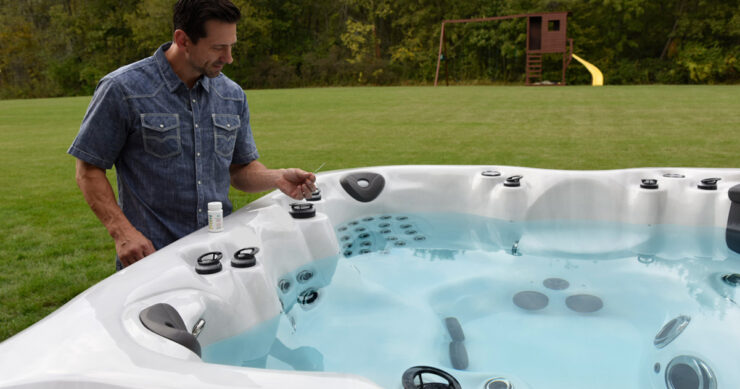As a hot tub owner, you know that maintaining clean and healthy water is essential. You routinely add chemicals to keep the water sanitized, and you rinse the filters to remove unwanted debris and contaminants. But lately, you have had to work harder to maintain the pH balance in your water. Or, maybe, you have noticed that the water has a film. These water care issues could be a sign that you have high phosphate levels in your hot tub.
Phosphates are naturally occurring compounds that are found in many water sources, including tap water. In small amounts, phosphates are not harmful to humans or animals. However, in high concentrations, phosphates can cause a range of problems in hot tubs. One of the most common issues is the buildup of white, scaly residue on the walls and floor of the tub. This buildup can be difficult to remove and can make your hot tub look dirty and uninviting.
High phosphates in your hot tub can be frustrating. Not only are you not able to enjoy your hot tub, you now have to spend time troubleshooting green or filmy water.
But there are easy-to-follow tips to help you successfully maintain your spa water and get the most out of your Master Spa.
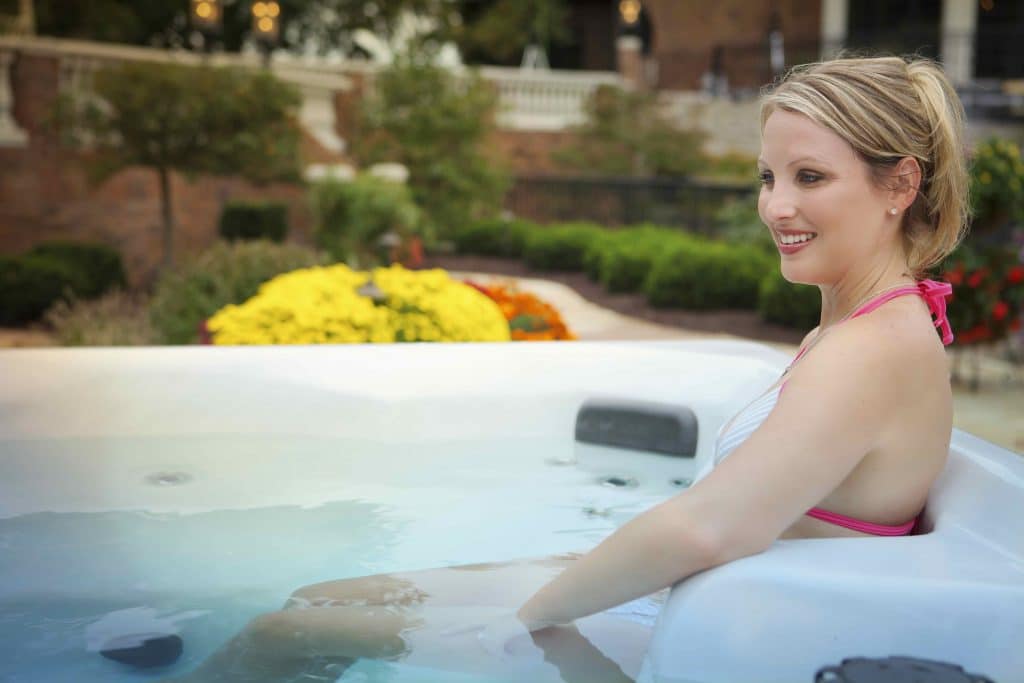
What are phosphates?
Composed of phosphorus, a naturally occurring element, and oxygen, phosphates are a chemical compound that can also incorporate hydrogen, calcium, and other substances. Phosphates are ubiquitous and can be present in various products such as cleaning agents, toothpaste, and food. They also are naturally occurring in groundwater at low concentrations.
But if phosphates are in toothpaste and detergents, how do phosphates get into your hot tub?
There are two likely culprits: your source water or soap residue on your swimwear. Phosphates can be added to the water by your municipality or come from fertilizer run-off. Even though your swimsuit goes through a rinse cycle in the washer, there is often still laundry soap remaining in the fibers.
You might be thinking that you don’t need to worry about phosphates, because you only use biodegradable detergents.
But there’s a catch: even if your detergent says it’s biodegradable, it could still contain phosphate compounds. Unless you are handwashing your swimsuit with just water, as Master Spas recommends, there’s a chance phosphates could build up in your hot tub water over time.
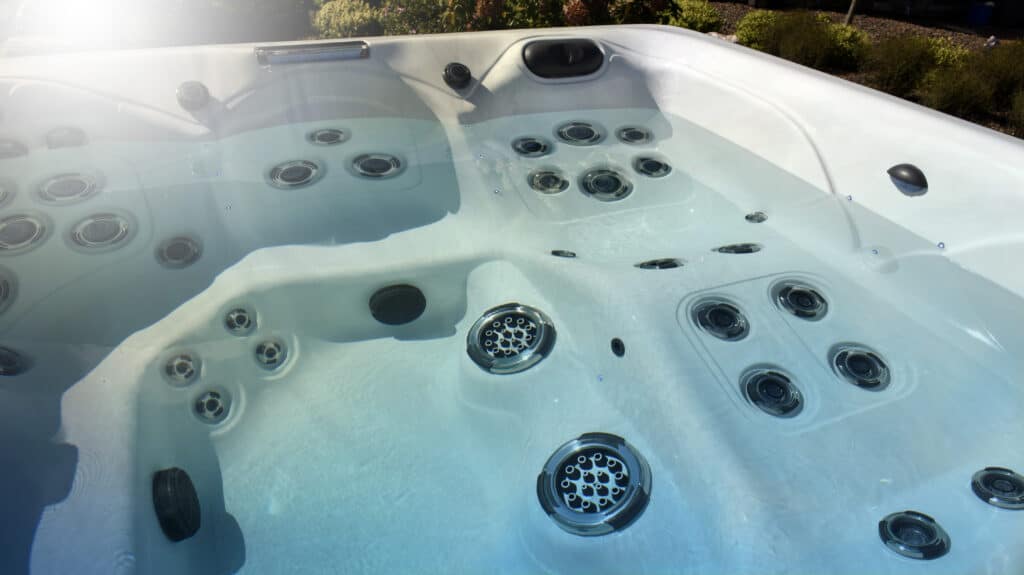
Should I be worried about high phosphates in the hot tub?
Phosphates are not necessarily the enemy of hot tub owners. But they can take away from the enjoyment of your hot tub.
The primary source of nutrients for algae growth in water, high phosphate levels can cause various problems such as cloudiness, discoloration, unpleasant odors, and reduced water quality. You might also notice that the surface of your spa feels slick.
In addition, when phosphate levels are high, there is higher demand for sanitizer — aka chlorine. You can continue to add chlorine but you’ll often notice that the levels are still low. This can make the hot tub unsafe for use and potentially harmful to people soaking in the spa.
While some levels of phosphates will not affect your water quality, it’s best practice to treat your water if your levels are more than 1,000.
Regularly testing your hot tub water, following a water care routine, and being sure to rinse off before you get in the water can help ensure your safety and enjoyment.
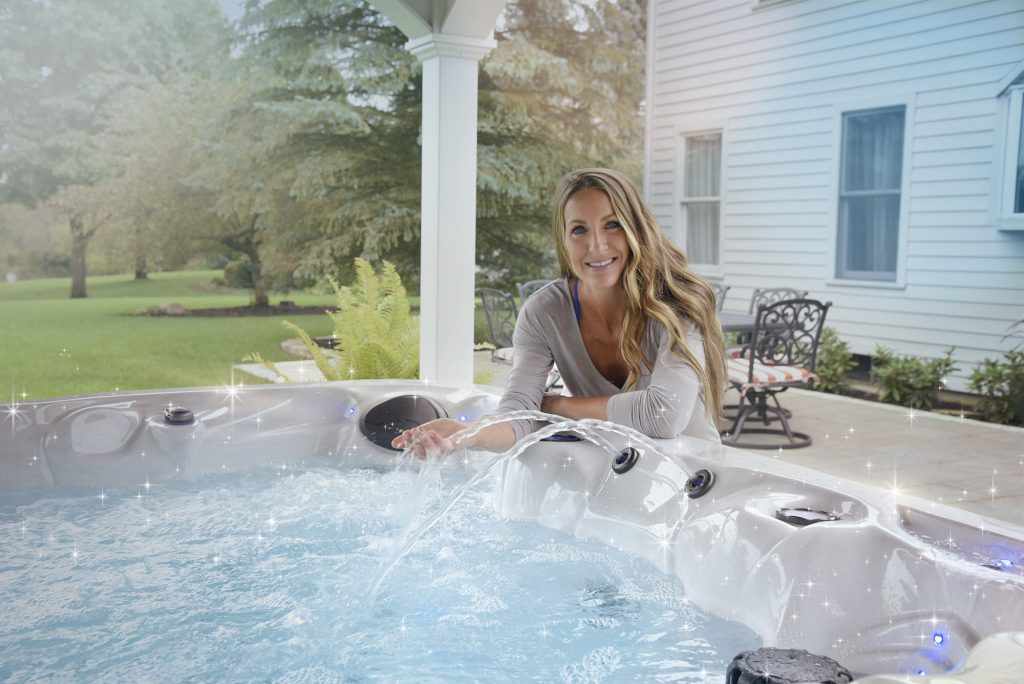
How to lower phosphates
High phosphate levels in your hot tub can be a frustrating problem to deal with, but with the right steps, you can effectively manage the issue and maintain clean and healthy water. If you suspect that you have high phosphate levels, use a water testing kit to confirm the problem and then take appropriate action to lower the levels.
With a little bit of effort and the right products, you can keep your hot tub looking and feeling great for years to come.
Use a phosphate remover
You can use a phosphate remover to lower the levels. This type of product works by binding with the phosphates and making them easier to filter out of the water.
If you use a phosphate remover, you might have to adjust your filter cycles. The default duration is generally 4 hours of filtering per day, whether it’s a two-hour cycle that runs twice a day or one 4-hour filter cycle. By changing the duration of the filter cycle, you increase the time that the water is circulating through the plumbing and filter system. That’s more time for the phosphates to be removed through the water.
If you go this route, keep in mind that you will also have to rinse your filters more often.
Add a natural enzyme
Adding a natural enzyme to your hot tub might lower your phosphate levels. These products typically contain specific strains of bacteria that break down organic matter such as oils, lotions, and other contaminants that can accumulate in the water. Hot tub enzymes can help to improve the overall water quality, reduce the need for harsh chemicals, and prolong the lifespan of the hot tub equipment.
To use natural enzymes in a hot tub, first, you should ensure that the pH and alkalinity levels are within the recommended range. Then, add the recommended amount of the enzyme product directly to the water according to the manufacturer’s instructions. You may need to shock the water before adding the enzymes to ensure that the water is clean and free from any contaminants.
It’s important to note that natural enzymes are not a replacement for regular hot tub maintenance, including regular cleaning and chemical balancing.
Drain and refill your hot tub
If your phosphate levels are very high, the best solution may be to drain your hot tub completely and refill it with fresh water. This will eliminate any built-up phosphates and provide a clean slate for proper maintenance.
Draining your hot tub might seem like the last thing you want to do. However, this step could be the simplest and most time-efficient way to be sure the phosphates are gone from your water. Some of the other methods could take several rounds or you might have to spend more time rinsing filters and monitoring water quality.
Once you have drained the spa, Use a shop vac to remove any remaining pockets of water. A microfiber cloth is helpful for wiping down the acrylic and cleaning any areas that need it. A gentle cleaner, like Windex, can be helpful to remove any residue on the sides of the spa. This step is especially helpful as it can remove any trace of phosphate build-up.
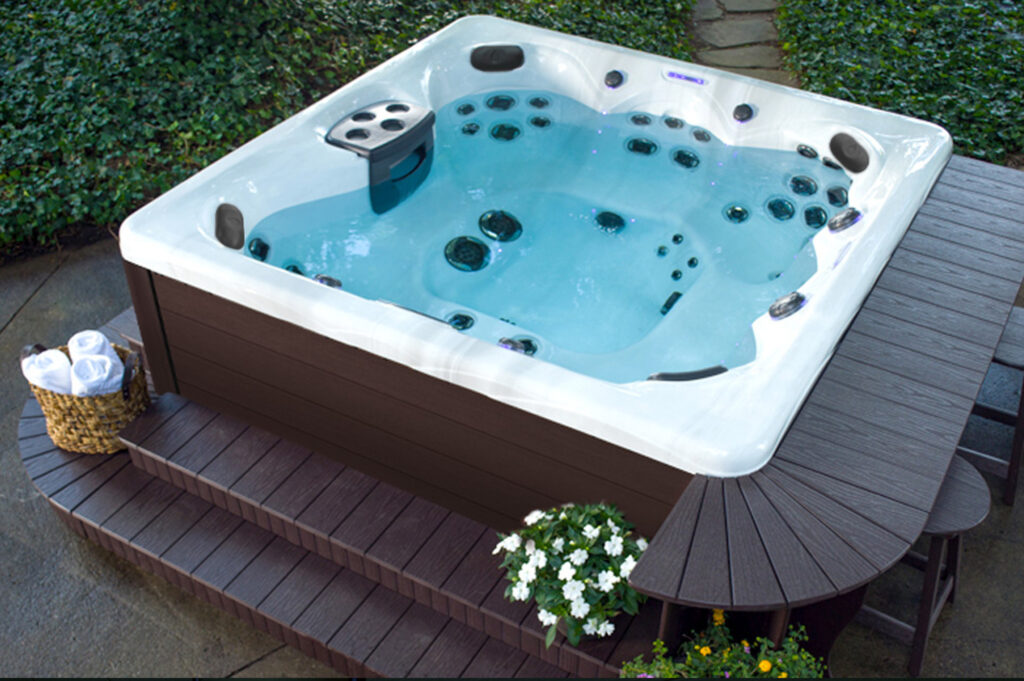
How to buy a hot tub
Look forward to spending more time in your own backyard oasis. A Master Spas hot tub can be enjoyed safely by the entire family. You can click here to learn more about the benefits of hydrotherapy. Or, contact your local Master Spas retailer to learn more about spa ownership. Wondering how much a Master Spas hot tub costs? You can request a quote here.


